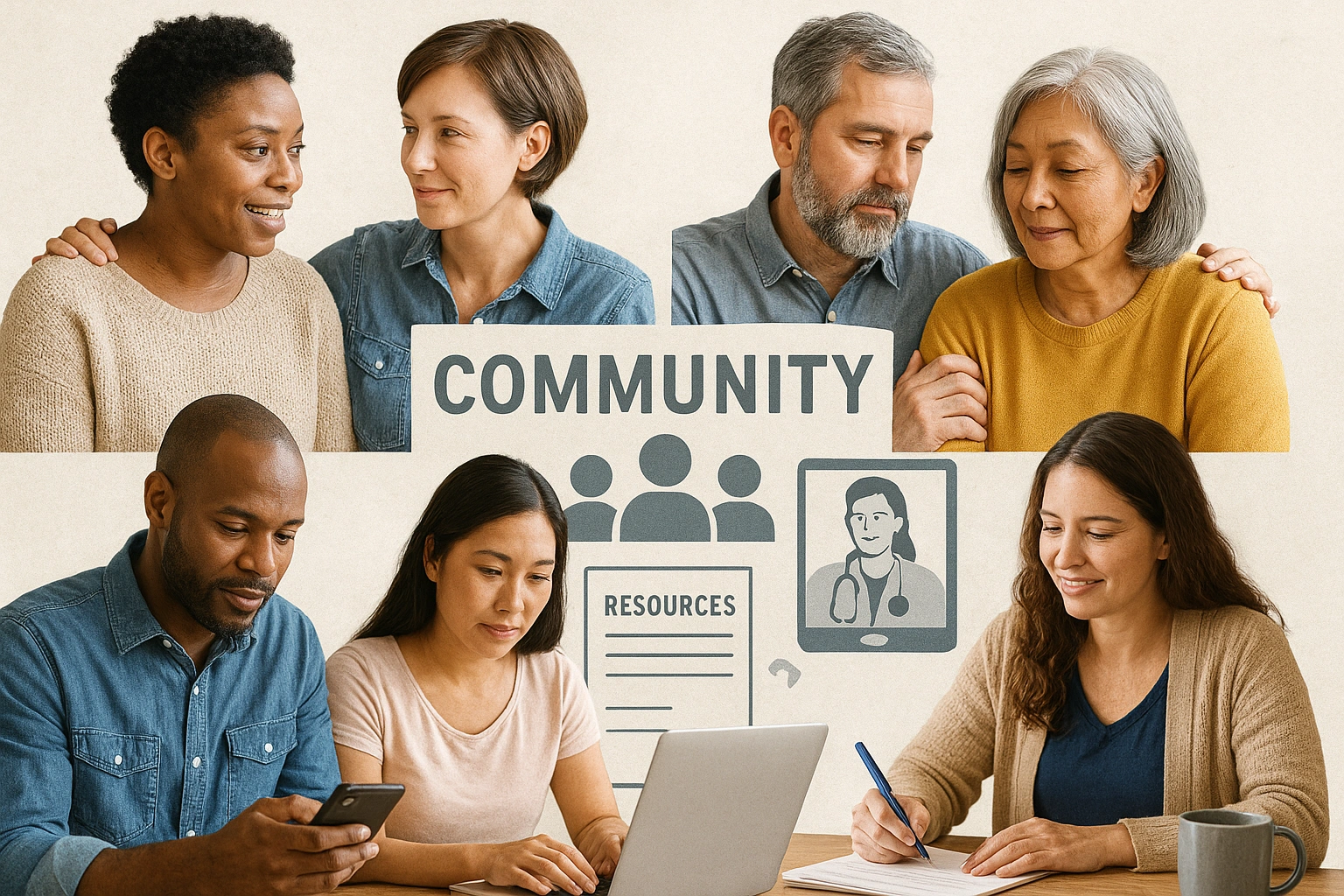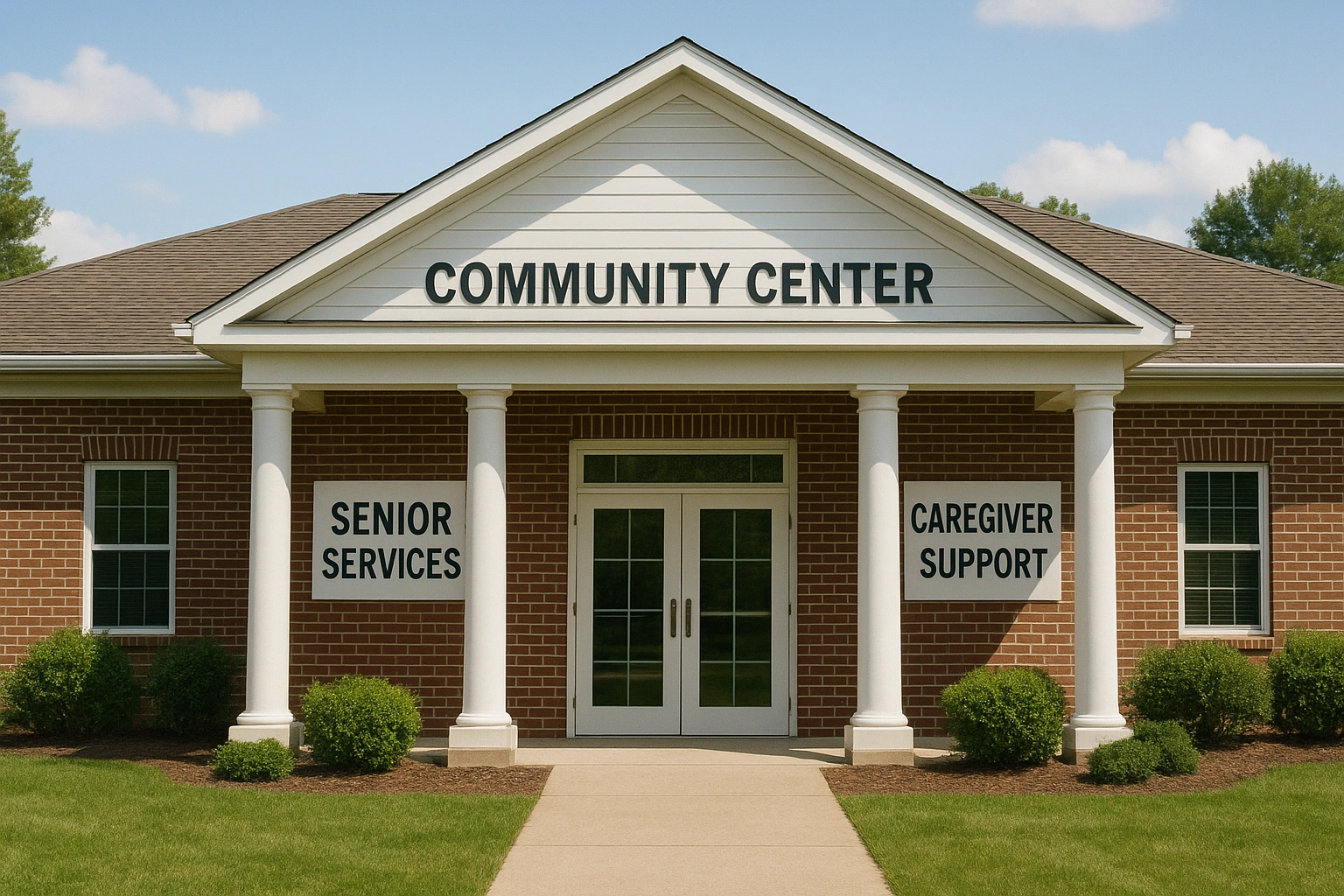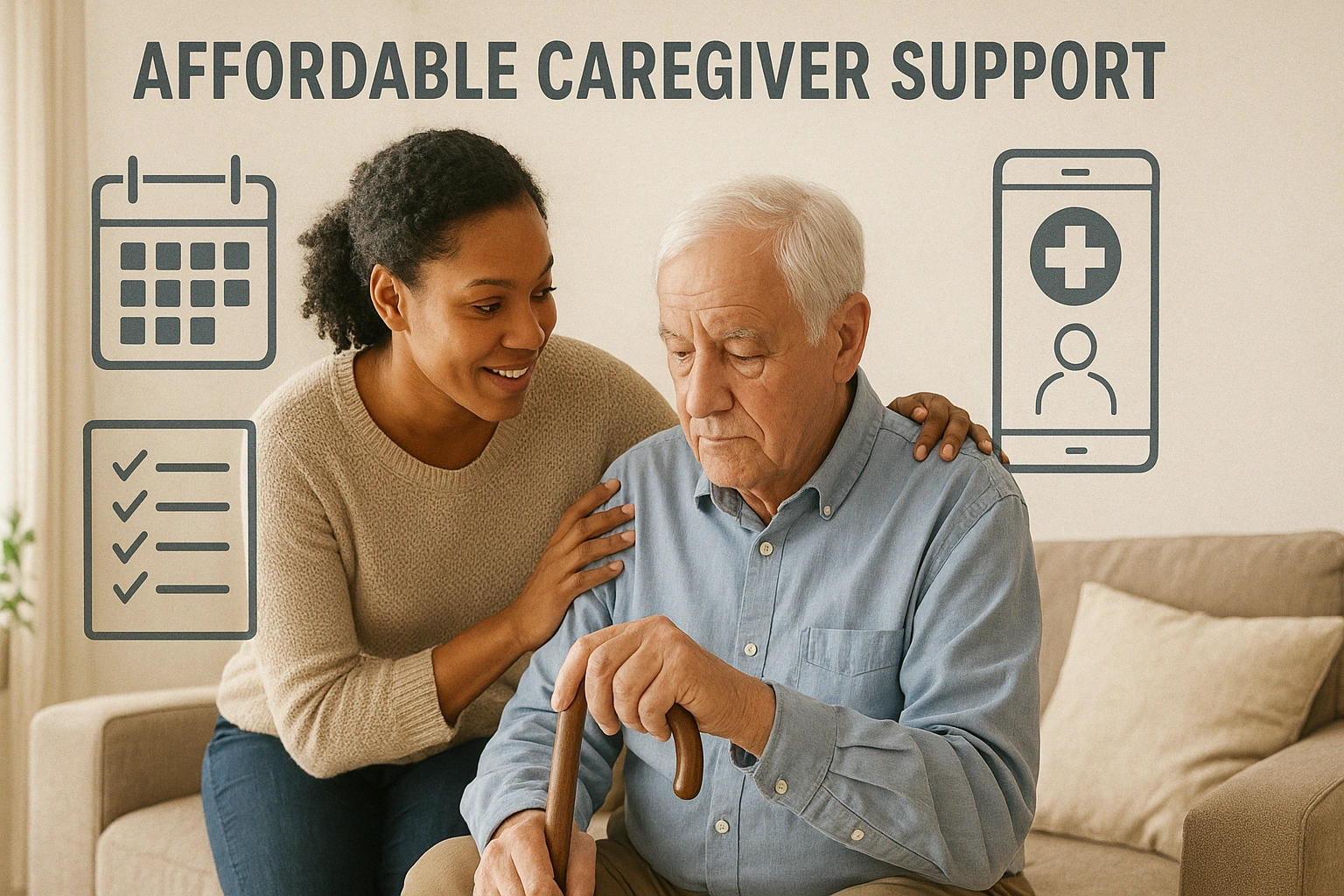
You’re a caregiver, juggling medications, appointments, and daily responsibilities, but who is looking after your needs? The emotional and financial toll can be heavy, and many worry they can’t access help without breaking the bank. Fortunately, affordable caregiver support programs exist to ease these pressures. By seeking out affordable caregiver support, you can find resources that provide relief without straining your finances. Utilizing affordable caregiver support options—from local respite care to online guidance—helps protect your well-being while maintaining quality care for your loved one. Even simple steps, like connecting with a support network, can give you the benefits of affordable caregiver support and prevent burnout before it takes hold.
What Are Affordable Caregiver Support?
The trend for 2025 is a greater emphasis on accessibility and integration. As the population ages, both public and private sectors are recognizing the critical need to make support more readily available. As highlighted by the National Council on Aging, the focus is on creating a “no wrong door” approach, where caregivers can access a network of help from multiple entry points, ensuring that cost is no longer a barrier to essential support.
Why Accessing These Resources is a Game-Changer
Tapping into these resources isn’t a sign of weakness; it’s a sign of strategic, sustainable caregiving. The benefits are transformative for both you and your loved one.
Reduces Financial Strain
By leveraging free and low-cost services, you can significantly reduce out-of-pocket expenses. This frees up financial resources for other necessities and provides invaluable peace of mind, preventing the need to choose between your loved one’s care and your own financial stability.
Decreases Isolation and Improves Mental Health
Connecting with support groups and other caregivers reminds you that you are not alone. This shared experience is a powerful antidote to the isolation that so many caregivers feel, reducing the risk of depression and anxiety.
Enables You to Care for Your Loved One Longer
Burnout is often what forces families to consider more expensive, institutional care. By getting the support you need, especially through respite care, you can recharge and continue to provide care at home for much longer, which is often the preference for everyone involved. Exploring these options, as detailed on sites like peternakan.web.id, is key to long-term planning.
Your Toolkit: Key Types of Affordable Resources
Let’s explore the primary categories of affordable support. Knowing these exist is the first step to finding them.

1. Government and Non-Profit Organizations
These are the cornerstones of caregiver support. Every county in the U.S. has an Area Agency on Aging (AAA) that is a gateway to services like meal delivery, transportation, and respite care grants. Disease-specific organizations (e.g., Alzheimer’s Association) also offer a wealth of free information and support.
2. Community and Peer Support
This includes free in-person or online support groups where you can connect with other caregivers. Local senior centers, hospitals, and faith-based organizations are often hubs for these groups, providing invaluable emotional support.
3. Technology and Digital Tools
A new wave of affordable caregiving tools has emerged. This includes free medication reminder apps, online care coordination platforms, and low-cost personal emergency response systems (PERS) that provide safety and peace of mind.
Putting Resources to Work: A Real-Life Scenario
Consider David, who cares for his mother with mobility issues. His budget was tight. He started with one phone call to the Eldercare Locator, which connected him to his local AAA. Through them, he enrolled his mother in a subsidized adult day care program three days a week. This gave him a much-needed break to continue his part-time work. He also downloaded a free app to coordinate with his sister for grocery shopping. This strategic use of free and low-cost caregiver support resources made his situation manageable without adding financial stress.
Comparing High-Impact, Low-Cost Caregiving Tools
Here’s a look at some of the most effective and affordable tools at your disposal.
| Resource/Tool | Primary Benefit | Typical Cost | Best For |
|---|---|---|---|
| Area Agency on Aging (AAA) | Centralized access to local services | Free to consult | Every caregiver’s first call. |
| Online Support Forums | 24/7 peer support and advice | Free | Getting quick answers and emotional support. |
| Medication Reminder Apps | Ensures medication adherence, reduces stress | Free to low-cost subscription | Managing complex medication schedules. |
| Adult Day Care | Provides respite for caregivers and stimulation for seniors | Low-cost (often subsidized through AAA) | Working caregivers who need daytime support. |
Common Mistakes That Keep Caregivers from Getting Help
Many caregivers don’t access available help because of these common misconceptions.
- Thinking “I Don’t Qualify”: Many caregivers assume they make too much money to qualify for programs. However, many services are not income-based or have generous eligibility requirements. Always ask.
- Being Unaware That Resources Exist: You can’t use a resource you don’t know about. This is why proactive research and contacting your AAA is so vital.
- Feeling It’s a Sign of Failure: Using a meal delivery service or adult day care is not a failure. It’s a smart strategy that allows you to be a better, more rested caregiver.
- Not Wanting to Be a “Burden”: You are not a burden for asking for help. The organizations are there because they exist to help you. It is their mission.
Expert Tips & Best Practices
Use these insider tips to unlock the full potential of caregiver support resources.

- Start with the Eldercare Locator: “If you do nothing else, call the Eldercare Locator at 1-800-677-1116,” advises geriatric care manager, Susan Bell. “It’s a national, government-funded service that will instantly connect you to the resources in your specific zip code. It’s the master key.”
- Look into Your Employer’s Benefits: Many companies now offer caregiver support as part of their employee assistance programs (EAPs), which can include free counseling or referral services.
- Leverage Disease-Specific Foundations: If your loved one has a specific condition like Parkinson’s, MS, or cancer, their respective foundations (e.g., The Michael J. Fox Foundation) often have dedicated caregiver resources and may even offer financial grants.
- Don’t Underestimate Local Faith Communities: Churches, synagogues, and mosques often have volunteer programs that can help with transportation, meals, or friendly visits, regardless of your own affiliation.
Frequently Asked Questions (FAQ)
Q: What is the best first place to look for free local resources?
A: Your local Area Agency on Aging (AAA) is unequivocally the best starting point. It is a government-funded organization specifically designed to be a one-stop shop for senior and caregiver resources in your community. They can connect you with everything from transportation services and meal delivery to respite care grants and support groups.
Q: Are there apps that can help coordinate care among family members?
A: Yes, several excellent and often free apps are designed for this. Apps like CaringBridge or Lotsa Helping Hands provide a centralized platform where family and friends can see a shared calendar, get updates, and sign up for specific tasks like providing a meal or a ride to an appointment. This helps streamline communication and delegate tasks effectively.
Q: Does Medicare pay for any caregiver support services?
A: Generally, Medicare does not pay for long-term custodial care (non-skilled personal care). However, it may cover some short-term in-home health services if prescribed by a doctor after a hospital stay. It also covers certain preventative services and medical equipment that can indirectly support a caregiver by improving the health and safety of the care recipient.
Q: How can I get legal advice affordably?
A: Many Area Agencies on Aging offer free or low-cost legal aid services for seniors to help with documents like power of attorney and healthcare directives. Additionally, your local bar association can often refer you to elder law attorneys who offer free initial consultations.
Q: I feel too overwhelmed to even start looking for resources. What should I do?
A: Start with one small, manageable step. Make a single phone call to the Eldercare Locator at 1-800-677-1116. This is a national service that will connect you directly to your local Area Agency on Aging. Just tell them your situation and ask, ‘Where do I start?’ They will guide you from there. You don’t have to figure it all out at once.
Conclusion
You do not have to walk the caregiving path alone or spend a fortune to get help. There are many free and affordable caregiver support options available that can make a real difference in your daily life. By exploring affordable caregiver support programs—whether it’s a local respite service, an online community, or guidance from professionals—you can start building the safety net you need. Using affordable caregiver support ensures that you can maintain your own well-being while providing consistent, compassionate care. Even small steps, like calling a hotline or joining a support group, can connect you with affordable caregiver support that helps your caregiving journey feel manageable and sustainable.
For a comprehensive database of resources, visit the Family Caregiver Alliance’s website. Help is closer than you think.
What is one resource from this guide that you will explore this week? Share your first step in the comments!
